- Home
- slideshows
- miscellaneous
- The best compost bins you can buy
The best compost bins you can buy
The best composter overall

The best rolling compost bin
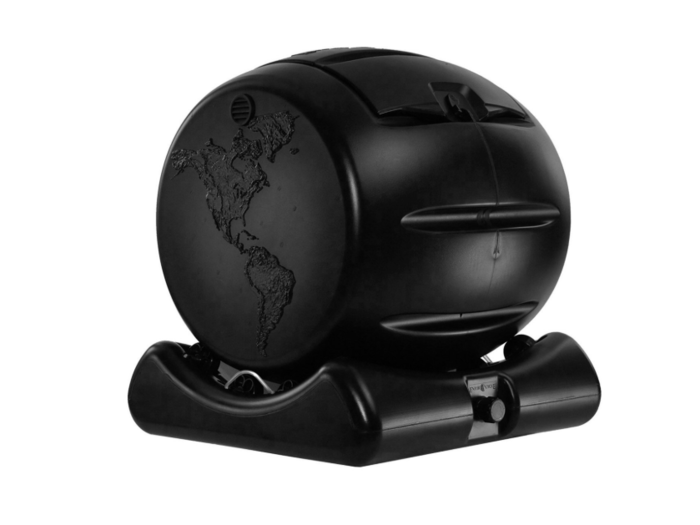
Rolling composters, such as the Envirocycle Tumbler Bin, are large plastic balls with a tightly fitted lid. The bin sits on a stand, making it easy to give it a roll or two each day, thus keeping the compost aerated and circulating for quicker decomposition. The Envirocycle Tumbler Bin, which bills itself as, "The most beautiful composter in the world," comes in two sizes: a 17-gallon bin for smaller yards and a 35-gallon bin for those with larger gardens. You also get it in black or hot pink.
What's great about rolling compost bins is that when your compost is completely "cooked," you simply roll the composter right where you want the compost, open it up, and dump or shovel the contents around your plants. No need for a bucket or wheelbarrow to transport the compost. According to Amazon buyers, it's fairly easy to roll the Envirocycle even when it's full.
The Envirocycle is made of BPA-free, food-safe plastic that won't fade, warp, or crack even in rough weather conditions. A small spigot in the base lets you pour out "compost tea" to use as fertilizer. Plants love this nutrient-rich liquid product of compost decomposition.
With nearly 600 reviews and an average of 4.5 stars, this is one of the most popular outdoor composters on Amazon, despite the somewhat high price.
Pros: There's no assembly required, it's easy to turn, it rolls right to where you need it in the garden, and it's reasonably attractive
Cons: A very few customers complained that the composter comes off its base too easily
Buy the Envirocycle Tumbler Bin on Amazon for $189.99 or $259.99 (price varies by capacity)The best kitchen compost bin
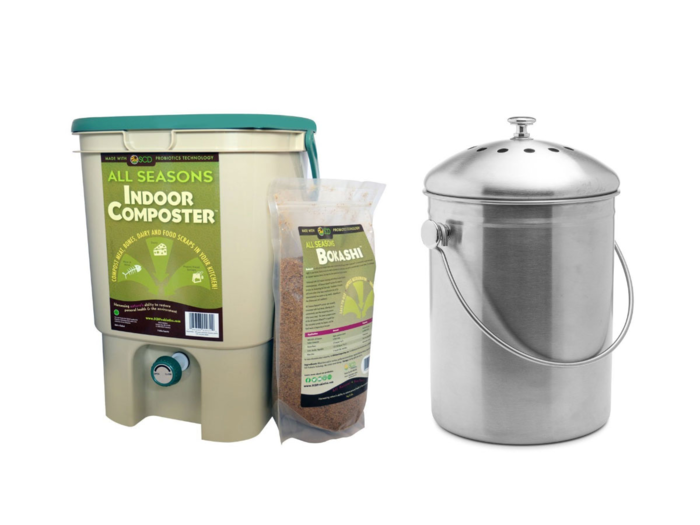
While you can't complete the full decomposition cycle indoors, the SCD Probiotics All Season Indoor Composter Kit lets you get a head start on your compost making, and provides plenty of compost tea, as well. If you simply want an attractive container to hold food scraps until you have a chance to add them to your outdoor compost bin, the Erica Stainless Steel Compost Bin is effective and attractive.
If you don't have room for a full-size composter, or have a very small garden, you might find that the SCD Probiotics All Season Indoor Composter Kit is all that you need. This anaerobic composter is intended for indoor use, but don't worry — It won't stink up your kitchen, and it fits right under the kitchen sink.
The kit includes a 5-gallon airtight bucket with a handy spigot for releasing compost tea, but what really sets this system apart from traditional outdoor composters is the included gallon bag of Bokashi compost starter, which activates the anaerobic fermentation process. Just drop your food scraps into the bucket, add a layer of Bokashi, and fasten the lid.
The compost will not fully "cook" inside this composter, however, so when the bucket is full, you'll need to bury or scatter the contents in your outdoor garden to finish the composting process.
If you are just looking for a convenient, airtight container to hold scraps until you have a chance to empty them into your outdoor compost bin, the Erica Stainless Steel Compost Bin looks good enough to keep out on your counter, has a charcoal filter to prevent odor, and holds up to 1.3 gallons of kitchen scraps.
Pros: Kitchen composters make it easy to recycle food scraps
Cons: You'll still need to transfer the contents to an outdoor composter before your compost is ready to use
Buy the SCD Probiotics All Season Indoor Composter Kit on Amazon for $46.95 Buy the Erica Stainless Steel Compost Bin on Amazon for $22.95 (originally $44.95)The best worm bin composter
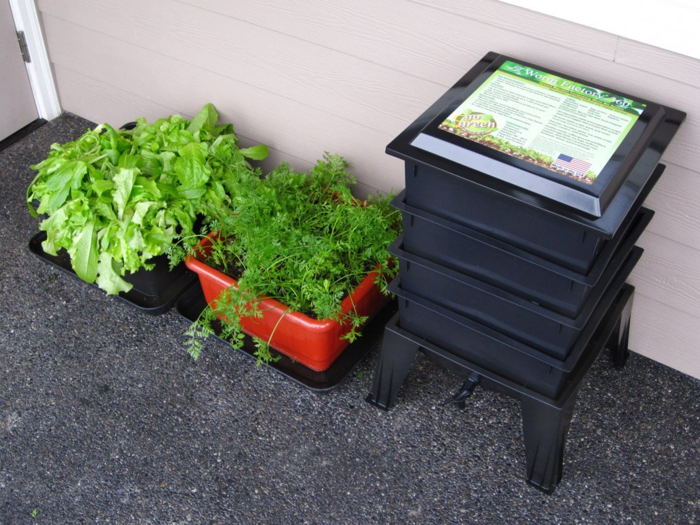
As with all things, what goes in must come out, and that's what makes worm composting — also called vermicomposting — so effective. Worms devour your food scraps, digest them, and then poop out super-rich, fertile compost loaded with nitrogen, phosphorus, potassium, and many micronutrients. The action of the worms also keeps the compost aerated and tumbled, so no need to do that yourself. When tended to properly, your worm composter should have no smell.
The Worm Factory 360 is small enough to sit in a sun porch or corner of the kitchen, or you can tuck it on a protected area of your patio. Worm bins do need to be kept in a temperature range of 40 to 80 degrees Fahrenheit, so if outdoors in a cold winter area, you will need to bring the bin indoors for the winter.
The setup includes four trays, although you can add additional trays if you want to expand. The process of vermicomposting is simple: Add worms to the bottom tray along with organic waste, and the worms will start their magic. When the bottom tray is full, add a new tray on top.
The worms will work their way up through the trays, allowing you to rotate trays as compost breaks down. There's a spigot to drain out compost tea, and small "ladders" that make it easier for your worms to crawl into the upper trays.
With 750 reviews and an average of 4.4 stars, Amazon shoppers really like the Worm Factory 360. Satisfied buyer Chad writes, "I could not be more pleased with my purchase. I have NO worm escapees, and any excess moisture drains from the bottom spigot. My red worms are thriving and voraciously consuming the food scraps I deposit into the tray. Great product and convenient for apartment living."
You will need to stock your worm bin with red worms, so look to Uncle Jim's Red Worms for a source of 1,000 live red wigglers. Add them to the bottom bin of your composter, and the worms will do the rest.
The Worm Factory 360 comes with an instructional DVD that teaches you everything you need to know about vermicomposting. The composter is available in black, green, or terracotta.
Pros: Worms are a great way to speed up and simplify composting, and this system makes worm farming a breeze
Cons: If exposed to excessive heat or cold, the worms will die
Buy the Worm Factory 360 on Amazon starting at $95.37 (price varies by color) Buy a starter pack of 1,000 live red worms on Amazon for $44.95The best basic closed compost bin
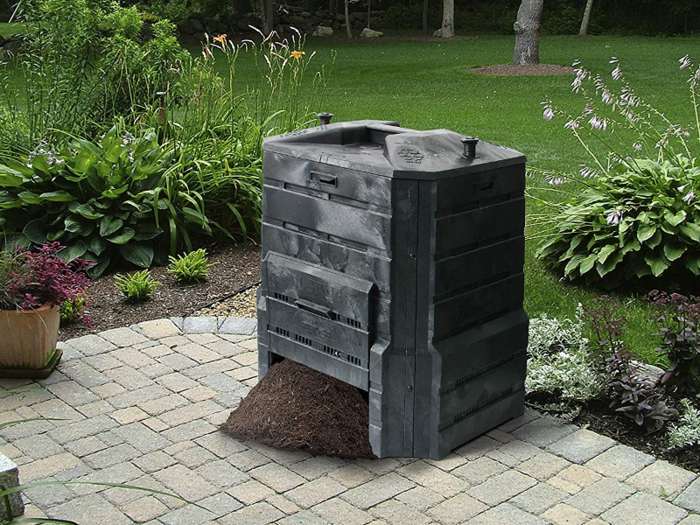
The most basic type of closed composter, the Soil Saver Classic Compost Bin is basically a box made of black plastic to maintain heat and regulate moisture for quicker composting. The open bottom lets worms, moisture, and microorganisms freely enter the bin to work their composting magic on your food scraps, yard waste, and other organic trash.
The lid lifts off so you can toss in scraps easily, and locks in place when closed so hungry critters can't raid the bin. There are plenty of vents, as well, which let oxygen reach the bin's contents.
While it's not required that you mix the decomposing compost periodically, it will greatly speed up the process. Unlike tumbling or rolling compost bins, mixing the contents of a traditional closed bin means you'll need to use a shovel or pitchfork. Once the lower levels of the compost are "cooked," you simply open the sliding doors on the bin's lower edge and shovel out the black gold.
The bin's 12-cubic-foot capacity means you can provide your yard with plenty of nourishing compost throughout the year. The sturdy construction and heavy plastic won't warp, split, or crack, and is BPA-free.
Pleased Amazon buyers praise the bin's sturdy construction, ease of use, and fertile compost. Many call it "the perfect composter," and say they own two or more of the bins for full-yard composting. The few complaints mostly deal with receiving faulty products.
Pros: A very sturdy, simple design that produces fertile compost without much fuss or bother
Cons: The open bottom means you'll want to place this on dirt, not on a concrete patio
Buy the Soil Saver Classic Compost Bin on Amazon for $94.99The best open compost bin
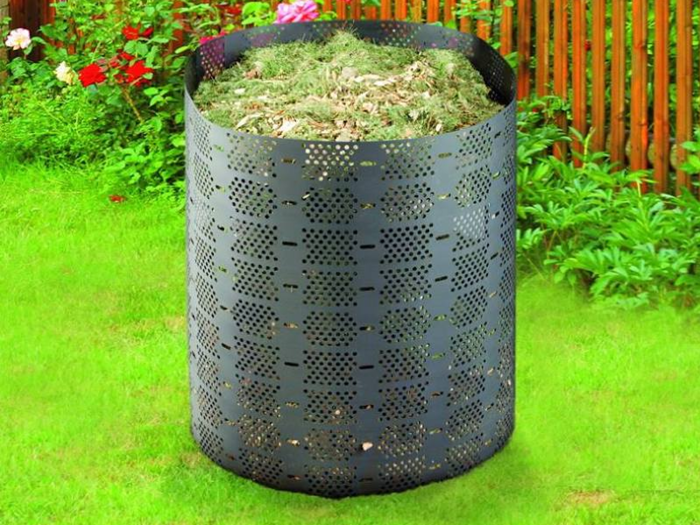
For those who prefer the ease of an open compost pile, but aren't too fond of the uncontrolled mess, the Geobin Compost Bin is the answer. This sturdy bin holds up to 216 gallons of compost when fully assembled, and closes along the sides with heavy plastic closure keys.
The plastic mesh material provides plenty of ventilation and moisture control to your compost pile, and holds up well to all types of weather conditions. If properly maintained and balanced, odor and insects shouldn't be a problem, but critters have easy access, so keep that in mind if you live in an area with abundant wildlife.
When you want to remove compost from the bottom of the pile, just remove one or two keys, open the bin up to provide access, and shovel out your rich and fertile compost. You don't have to mix the bin's contents while they decompose, but if desired to speed up the process, you can do so with a shovel or pitchfork.
Amazon reviewer James G. writes, "Once unpacked and put together, this compost bin actually looks pretty sleek and professional in a backyard setting. The plastic, although flexible, is very durable. It would take quite a bit force to break or damage it. Composting can be as complicated or simple as one would like. The Geobin leaves most of that up to you with an uncomplicated design, easy access to the top, and well-ventilated sides. My favorite part is that this bin meets the general minimum 3'x3'x3' size requirement for hot composting."
Other owners are equally pleased. The Geobin Compost Bin has 550 reviews and an average of 4.1 stars. The few buyers who are unhappy with the bin mostly complain that they had a hard time keeping it in place.
Pros: A great alternative to a pile on the ground, this bin keeps your compost cooking and contained
Cons: Some complaints that the bin didn't remain upright
Buy the Geobin Compost Bin on Amazon for $32.38How to compost: The basics
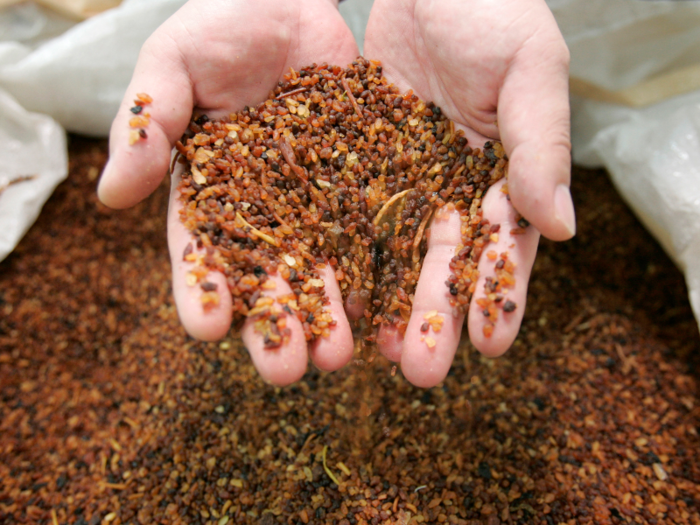
Compost is the end result of decomposing organic materials. The breakdown of materials frees nutrients that are then available for the roots of plants. Mixing compost into the soil around your plants improves not only the fertility of your soil. It also improves drainage and makes the soil lighter and resistant to becoming hard and compacted.
You can compost a surprisingly wide range of household waste, including:
- Grass clippings
- Dead leaves
- Leather
- Hair
- Wood ashes
- Cardboard
- Coffee grounds
- Corncobs
- Vegetable and fruit peelings and scraps
- Dryer lint
- Tea bags
- Eggshells
- Feathers
- Newspaper
- Sawdust
- Peanut shells
You should NOT compost:
- Coal ash
- Cat or dog feces
- Meat or bones
- Oil or grease
- Toxic materials
- Dairy products
- Tissue paper
By combining both fresh material and dried waste, such as dead leaves, your compost pile will maintain the colonies of microorganisms essential for the decomposition process. A rough guideline is to mix three parts brown materials (dead leaves, paper, sawdust, corn cobs) to one part green materials (food scraps, weeds, coffee grounds).
A healthy compost pile generates heat, sometimes up to 160 degrees Fahrenheit at the center of a large pile. This heat accelerates the composting process. Other essentials for composting are oxygen — which is provided by turning the pile frequently — and moisture, which is added in the form of water if the materials being composted aren't already moist enough.
Popular Right Now
Popular Keywords
Advertisement